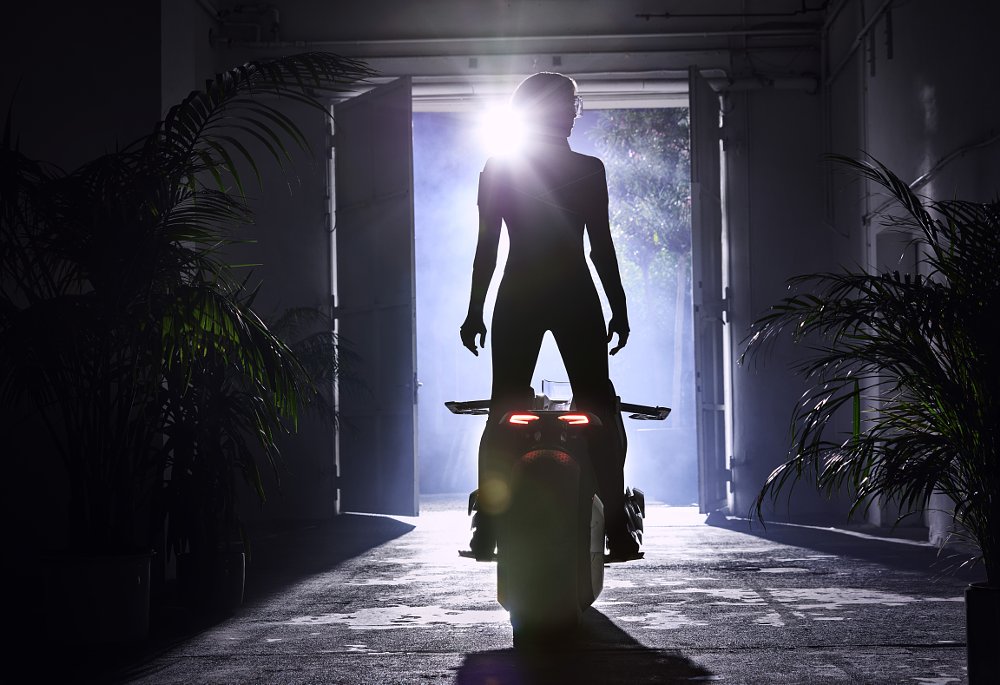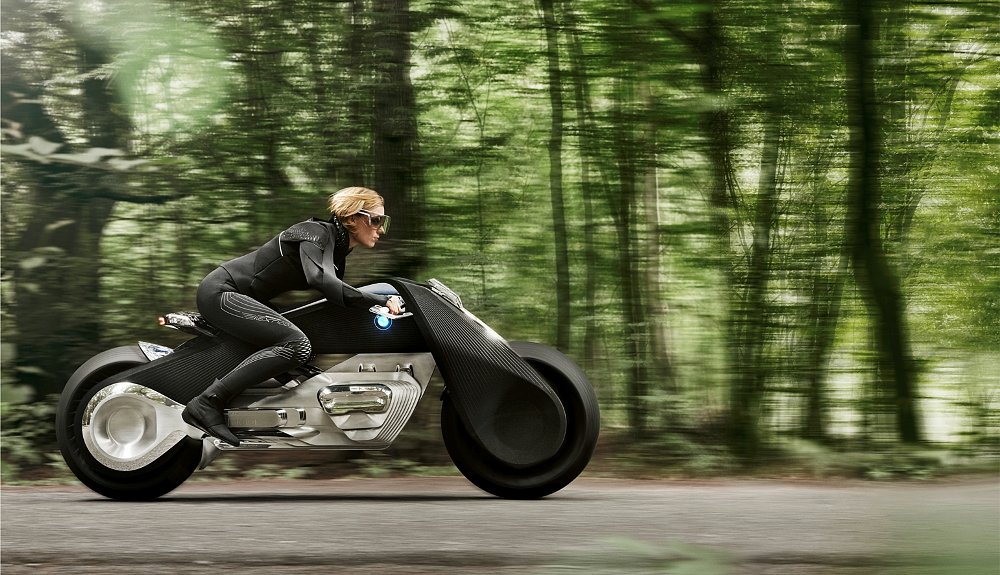“The future of motorcycling will be so safe that riders won’t have to wear a helmet or gear. There will be no way you can have an accident.”
I’m sitting with Peter Schwarzenbauer, Board Member of BMW AG, and a group of journalists with puzzled expressions. Peter has our attention.
BMW turns 100 this year, and things are looking good. They currently enjoy a worldwide market share of 15 percent and a three percent increase in sales from January-September 2016 compared to the same time period last year. Looking specifically at over 500 cc premium bikes, they’re the market leader in 27 countries. By 2020, they plan to double their market share in America.
By 2120, they plan to eliminate the idea of a motorcycle crash. I can’t be the only person in this room who doesn’t believe them, but BMW is celebrating its 100th birthday with an international tour to show me the future and why I’m wrong.

BMW called this tour the NEXT 100 Vision. In three previous stops in Munich, Beijing, and London, they’ve offered glimpses of the future of mobility according to BMW cars, Rolls-Royce, and Mini. In Los Angeles, the focus was on two wheels.
The event took place at the Petersen Museum, which is about the past, not the future. While my peers were drooling over cars on display like the 507 convertible and an M1 sports car, I made a beeline towards one of the surviving examples of BMW’s first production bike: a 1923 R32.

But this is not about your great-grandfather’s motorcycle or your father’s sports car. It’s about what motorcycles your great-great-granddaughter will ride. It’s about a world where you tell someone you ride a motorcycle and the first response isn’t “But those things are dangerous!”
Behold the BMW Motorrad VISION NEXT 100. With a theme of “the Great Escape,” BMW believes that the feeling of freedom enjoyed on a motorcycle is amplified when the rider feels safe, and that they can ensure safety via increased communication between riders, motorcycles, and the outside world.

The Germans are banking on two fundamental assistance systems. First, a gyroscope-powered self-balancing mechanism prevents the motorcycle from falling over. For beginners, the benefits are obvious: The system monitors lean angles and it can intervene if it detects an impending disaster. BMW claims the system will benefit expert riders as well, by “actively boosting the motorcycle’s riding dynamics.” I don’t know what that means, and it wasn’t clear that BMW does either. The takeaway is that no matter a rider’s skill level, he or she can ride better and have fun.

The other assist comes from the Smart Visor, featuring what BMW calls the “Digital Companion.” A wrap-around goggle displays relevant information in the rider’s view and doubles as a windshield. BMW is looking beyond speed and directions, though. The Smart Visor will display lean angle, upcoming hazards, or even the best line through a corner — and if there’s a delayed reaction and the rider veers off the line, the bike can correct itself with the Self Balancing System to prevent a crash. The visor reads your eyes: If you look up, it gives you a rear view display. Look down as if you were reading the map on a tank bag to see a digital map with your route. Or just look ahead for a menu that you can interface with by pointing a finger.

The bike itself strikes a balance between looking backwards and forward. The black triangular frame and the boxer engine both call back to the R32, but the frame is flexible (hence the name “Flexframe”) so the whole unit bends just by turning the handlebar.
The “engine” is actually an electric motor which expands to provide wind protection and make it look more like a boxer once the bike is moving. Carbon fiber is used for bodywork pieces like the seat, upper frame cover, and wings. Damping is handled by the tires, which also feature variable tread that adjusts as ground conditions change. We asked BMW what technology would allow the tires to change shape on the fly, even if only in theory, but nobody provided an answer by the time this article was published.
Despite all the futuristic technology, the idea is that BMW wants to give their customers the same sense of freedom that riders experienced in the very early days of motorcycling, that stereotypical “wind in your hair” feeling.
The bike of the future will apparently require no gear, but BMW will be glad to sell you some gear of the future to complement your new ride. With the requirements for protection removed, gear will become more of a fashion statement, so it will be light and flexible with a bionic structure that provides “active support.” Feedback including vibration or illumination will alert the rider if there’s a hazard or your turn is coming up. Sensors in the suit monitor heart rate and body temperature.

As Munich has shown off the future of BMW cars, Mini, and Rolls-Royce, they keep going back to the acronym of ACES: Automated, Connected, Electrified, and Shared. They stuck with the same theme for the Great Escape, but with a caveat. As Edgar Heinrich, the head of BMW Motorrad Design put it, “Motorcycling is an emotional, analog experience. The BMW Motorrad NEXT VISION 100 keeps this experience alive in a digital world.”
On a serious note, autonomous vehicles are inevitable, which means it’s just a matter of time before people start questioning whether our beloved motorcycles should be allowed to swim free in a sea of computer-controlled automobiles. I’m encouraged that one of the world’s premier manufacturers of both cars and bikes still sees a place for both going forward.











